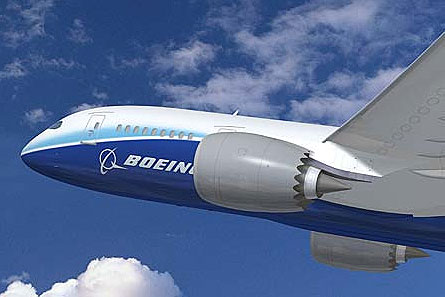Boeing plans to reduce airframe drag on the 787 by standardising on a specific thickness of grey paint (pictured below) for the engine inlet which it says will preserve natural laminar flow over a larger area.
The benefits of laminar flow over the nacelle include increased range, improved fuel economy, and even reduced aircraft weight. These benefits add up to improved operating economics as well as reduced emissions. By using a seamless paint layer applied according to tight Boeing design tolerances, as opposed to the more traditional airline practise of applying several layers of different paint, the company says thousands of litres of fuel will be saved every year.
“If you interrupt the laminar flow over the inlet by adding paint layers, which are common with airline liveries, you could increase fuel burn by 30,000USGal [115,000 litres] per year per aircraft,” says 787 propulsion leader Ron Hinderberger.

Laminar conditions are generally hard to achieve and maintain, and Boeing has put considerable effort into this design aspect to offset the drag of the 787’s extra large bypass engines at a time of rising fuel costs. Although active laminar flow control techniques (involving suction of boundary layer air through tiny holes and slots) have been investigated by Boeing in the past, the passive laminar flow technique adopted for the 787 is based largely on well-known design processes.
Although aircraft as far back as the North American P-51 Mustang fighter of World War II fame had a passive laminar flow wing, the laminar conditions existed for only a very short distance past the leading edge. The Boeing paint initiative hopes to not only increase the natural laminar flow area aft of the inlet leading edge, but allow it to be maintained in service for long periods without significant degradation over time
Source: Flight International



















